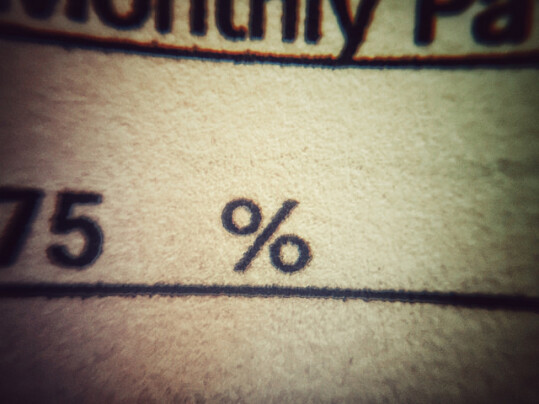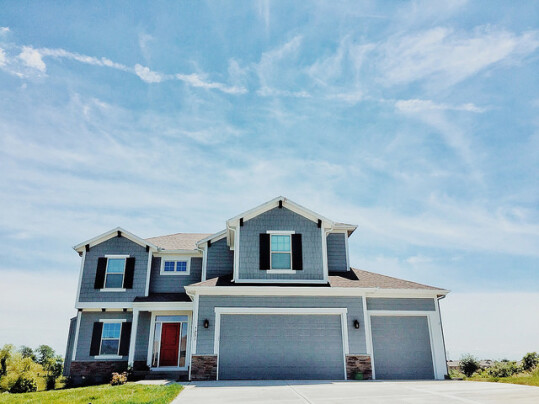The housing market’s breakneck pace this spring may’ve caused, at least, some prospective home buyers to hesitate. Competition, bidding wars, and double-digit price increases will do that. After all, choosing a house to buy is already a big decision without the added pressure of a hot market. But if you’re a buyer who’s been waiting for the market to cool off, Fannie Mae’s Economic and Strategic Research Group may have some encouraging news. The group – which releases a monthly outlook for the housing market and economy – says they expect things to start cooling down. In fact, Mark Palim, Fannie Mae’s vice president and deputy chief economist, says the group sees moderating price increases and improved inventory on the horizon. “While recent home price growth has been historically high, we’re forecasting further home price appreciation to moderate through the remainder of the year and into 2022,” Palim said. “On the supply side, we think home builders will be able to increase production as supply chain disruptions and labor shortages alleviate, which should add to the inventory of new and existing homes available for sale.” (source)
Archive for July 2021
Rates Fall To Lowest Level Since February
According to the Mortgage Bankers Association’s Weekly Applications Survey, average mortgage rates fell last week from one week earlier. Rates were down across all loan categories, including 30-year fixed-rate loans with both conforming and jumbo balances, loans backed by the Federal Housing Administration, and 15-year fixed-rate loans. Joel Kan, MBA’s associate vice president of economic and industry forecasting, says the drop brought rates to their lowest level in months, and in some cases decades. “The 10-year Treasury yield fell last week, as investors grew concerned about increasing COVID-19 case counts and the downside risks to the current economic recovery,” Kan said. “Refinance applications jumped, as the 30-year fixed mortgage rate declined to its lowest level since February 2021, and the 15-year rate fell to another record low dating back to 1990.” Despite the declines, however, purchase application demand slowed week-over-week, dropping 2 percent from the week before. The MBA’s weekly survey has been conducted since 1990 and covers 75 percent of all retail residential mortgage applications. (source)
What Can Prices Tell Us About Today’s Buyers?
Home prices are rising. That’s no surprise to anyone who’s been looking to buy or sell a home. In this market, there are more buyers than homes for sale and the imbalance has been pushing prices higher for months. In fact, according to the S&P Case-Shiller Home Price Indices – considered among the leading measures of U.S. home values – price growth broke records again in May. In other words, this year’s housing market has been hot. But, according to Craig J. Lazzara, managing director and global head of index investment strategy at S&P, home-price data also says something about buyers’ priorities. “We have previously suggested that the strength in the U.S. housing market is being driven in part by reaction to the COVID pandemic, as potential buyers move from urban apartments to suburban homes,” Lazzara said. “May’s data continues to be consistent with this hypothesis. This demand surge may simply represent an acceleration of purchases that would have occurred anyway over the next several years. Alternatively, there may have been a secular change in locational preferences, leading to a permanent shift in the demand curve for housing.” (source)
New Home Sales Slip In June
New numbers from the U.S. Census Bureau and the Department of Housing and Urban Development show sales of newly built single-family homes fell 6.6 percent in June from the month before. The decline was unexpected. In fact, economists polled before the report’s release forecast a 3 percent increase from May’s number. So what happened? Well, high home prices and the rising cost of building materials may have something to do with it. The median sales price of new homes sold during the month was $361,800. The average price was $428,700. But while high home prices may have made buyers more hesitant in June, there were some encouraging signs in the monthly report. For example, the number of new homes for sale is higher than it’s been in more than a year. That means, home builders have been adding for-sale inventory, which should help moderate future price increases. And it may have already started. The median and average sales price both fell last month, with the median price almost $20,000 lower than it was in May. (source)
Homes Closer To Cities See Slower Price Growth
There’s a reason living near a major metropolis has traditionally been more expensive than living further away. Put simply, it’s where the jobs are. And, if you work in the city, you likely aren’t going to want to live so far away that you have a two-hour commute there and back. Naturally, though, the pandemic has changed things. With more Americans able to work remotely, home buyers have a different set of priorities than they did even a few years ago. For example, a recent analysis of commute times and home prices found that homes within 10 minutes of city centers are seeing slower price growth than those further out. In 2017, homes within a 10-minute commute had the fastest-growing home values in half of the 18 most expensive metros. Now, only three of the 18 are still experiencing the fastest growth. In fact, these days, more than half of them are experiencing slower growth or even seeing prices beginning to fall. That’s pretty strong evidence that remote work has changed our priorities and moved affordability higher than living near the city on many buyers’ wish lists. (source)
Improved Supply Pushes Home Sales Higher In June
Sales of previously owned homes increased 1.4 percent in June, according to new numbers from the National Association of Realtors. The month-over-month improvement pushed home sales 22.9 percent higher than they were last year at the same time. Lawrence Yun, NAR’s chief economist, says the number of available listings has improved and it’s helping home sales. “Supply has modestly improved in recent months due to more housing starts and existing homeowners listing their homes, all of which has resulted in an uptick in sales,” Yun said. “Home sales continue to run at a pace above the rate seen before the pandemic.” But while the number of listings has increased, inventory is still tighter than historically normal. In fact, at the current sales pace, there was a 2.6-month supply of homes available for sale in June. That’s improved from May but still well below the 6-month supply considered healthy for the market. That means buyers still need to be prepared to act fast, since nine of 10 homes sold in June were on the market for less than a month. (source)
Rates Mostly Down From Week Before
According to the Mortgage Bankers Association’s Weekly Applications Survey, average mortgage rates were mostly down last week, with decreases seen for 30-year fixed-rate mortgages with jumbo balances, loans backed by the Federal Housing Administration, and 15-year fixed-rate loans. Rates for 30-year mortgages with conforming loan balances rose slightly from the week before. Joel Kan, MBA’s associate vice president of economic and industry forecasting, says mortgage rates are being affected by coronavirus concerns. “The 10-year treasury yield dropped sharply last week, in part due to investors becoming more concerned about the spread of COVID variants and their impact on global economic growth,” Kan said. “There were mixed changes in mortgage rates as a result, with the 30-year fixed rate increasing slightly … after two weeks of declines.” Demand for mortgage applications was down week-over-week. Refinance activity fell 3 percent and the Purchase Index was down 6 percent. The MBA’s weekly survey has been conducted since 1990 and covers 75 percent of all retail residential mortgage applications. (source)







